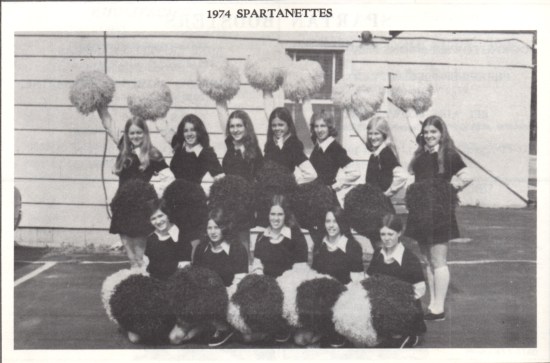Ever hear the song, “The Cat Came Back?” Poor mister Johnson has a troublesome cat that he simply can’t get rid of:
The song came out in 1893 and was popular throughout its history. However, it may have been inspired by an 1888 event when some fellows in Cairo, Illinois decided to host a “cat-losing” contest.
JIM MANGUM’S CAT DISAPPOINTED HIS OWNER.
Feline with Wonderful Record Failed to Make Good Just When It Was Most Desirable–Cost Him Much Money.
“Ever hear about the cat-losing we had out our way in ’88?” asked the Cairo Liar. “Never heard of a cat-losing? Why, they’ve often had ’em out in my section since the first one was pulled off at Cairo. The way it happened was this: There was an old citizen in Cairo named Mangum, who bragged all during the summer of ’88 that he had a cat that couldn’t be lost. The cat was onnery and a night marauder of the despised male gender, and Jim had tried all sorts of ways to lose that cat, he said. He had tied four bricks to the cat’s neck on several occasions and then chucked the feline into the Mississippi, which runs pretty swift at Cairo, but every time Jim went home after doing this he had found the cat sitting on the front porch, licking himself. Jim was determined to get rid of the cat, though, and he finally tied it up in a jute bag and handed it to a friend of his, a mail clerk on the railroad, and asked the mail clerk to ditch the cat, bag and all, at any old point not nearer than 100 miles from Cairo. The mail clerk did this to oblige old Jim, heaving the cat out in the dark somewhere on the edge of a swamp about 125 miles from Cairo.
“Jim announced down at the post office three days later that the cat was back, looking a bit hungry and with less of its left ear than it had had before, but still in the ring and pretty nifty, considering. Jim by this time regarded his cat as a wonder, and he made a good deal of nuisance of himself telling everybody in Cairo that, in his opinion, which he was willing to back with money, marbles, or chalk, that there wasn’t a cat in the state of Illinois, or, for the matter of that, in the whole blamed country, that had such a dead bead on home as his cat had.
“Somebody finally suggested that the thing be tried. This was just was Jim wanted, and so a committee of arrangements went ahead to organize the cat-losing. It was finally determined that all of the cats entered should be driven out in the woods, in a farm wagon, and then, at a point about five miles from town, chucked out of the wagon, free-footed, and left to hustle for themselves. There were 30 entries, each man who entered his cat paying $5 for the privilege. The cat that reached its home first was to pull down the $150 for its owner.
“A good many of the Cairo citizens who had cats entered in the event rehearsed their felines several times before the regular cat-losing was to come off, and all of the cats showed extraordinary aptitude in hustling back to their own doorsteps from distant points. Jim didn’t rehearse his cat at all. ‘Any cat,’ said he, ‘that can scramble out of a jute bag heaved into a swamp more’n 100 miles from its own fireside, don’t need no rehearsing. That cat’s got it in him, and he’ll be the first cat back, for money’ The betting was lively on the event for fully a week before it came off.
“Well, on the day the cats were driven out into the woods, competent and honest judges were placed at each of the 30 homes of the 30 cats, with instructions to time the exact moment of the appearance of the respective felines they were looking for. The cats were turned loose from the farm wagon at exactly two o’clock on a Saturday afternoon, and by that time most of us who had bets down on the outcome were sitting on the courthouse steps, waiting for the first judge to turn up with the announcement that the cat he had been appointed to time upon its arrival was back.
“At exactly 2:30 a young fellow named Charley Glass came running up to the courthouse on a lope, with his cat under his arm. The cat had its numbered tag around its neck and we all fully identified it as one of the starters. So the $150 was Glass’, and I had won $150 from Jim Mangum. Following that, for the space of a half an hour the judges all turned up with their respective cats–all except the judge who had been placed at Mangum’s home. Jim’s cat didn’t come back that night nor the next night, nor ever again. That happened nearly 20 years ago, and Jim’s cat isn’t back yet. Jim almost went broke paying up his debts, and after that whenever he’d see a cat two blocks down the street he’d shy rocks and cuss it as far as he could see it.”
The story was reprinted, in verbatim by dozens of newspapers throughout the U.S. in May and June of 1907, all crediting the story to the “Cairo Liar”, which isn’t the name of any reputable paper at the time. The Cairo Bulletin, however, was a real paper, but doesn’t have any proof of the original event, nor any happening since the first cat-losing. So, it is more likely to be a case of the song inspiring a tall tale of amazing cat navigation, and the failing of hubris, many years later.









































































































